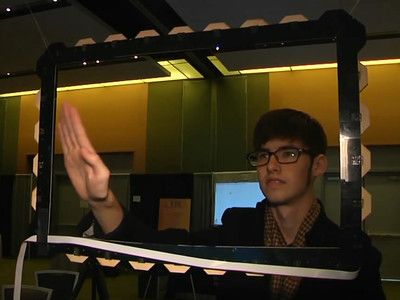A tiny robot that flies in the sky while emitting light with the hint of 'fireflies that shine on summer nights' will be developed.

In the summer, adult fireflies fly around the water's edge to illuminate their luminous organs and try to attract the opposite sex. Inspired by the light-emitting organs of this firefly, a researcher at the Massachusetts Institute of Technology (MIT) said that he succeeded in developing an ultra-compact robot that flies around while shining by embedding luminescent particles in an insect-sized robot that flies in the sky with an actuator. Announced.
FireFly: An Insect-Scale Aerial Robot Powered by Electroluminescent Soft Artificial Muscles | IEEE Journals & Magazine | IEEE Xplore
Robotic lightning bugs take flight | MIT News | Massachusetts Institute of Technology
https://news.mit.edu/2022/robotic-actuator-fly-0621
The firefly's butt is equipped with a luminescent organ, and a substance called firefly luciferin is oxidized by an enzyme called firefly luciferase to chemiluminescent yellow. Fireflies emit light as a reproductive appeal for adults, and larvae also have a light-emitting organ, which is said to alert predators.
Kevin Chen, Assistant Professor of Electrical Engineering and Computer Science at MIT, has previously developed flying microrobots with actuators that alternate between ultra-thin layers of elastomers and carbon nanotube electrodes to move their wings. From the appearance of fireflies emitting light, Assistant Professor Chen came up with the idea of incorporating electroluminescent zinc sulfate particles that emit light when electricity flows into the actuator of this microrobot.
You can see what kind of robot it is by watching the following movie.
Robotic lightning bugs-YouTube
This is the developed microrobot.
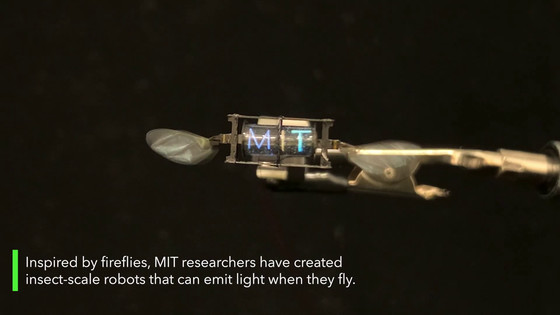
In the dark, the letters 'MIT' are shining on the actuator at the base of the blade.

Elastomer containing zinc sulfate particles with electroluminescence and carbon nanotube electrodes are overlapped and rolled up.
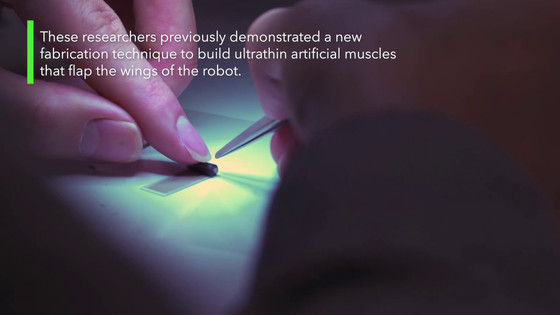
The actuator for the robot is completed.

When a voltage is applied to the actuator, the actuator moves and flaps, and at the same time, the incorporated electroluminescence zinc sulfate particles emit light.
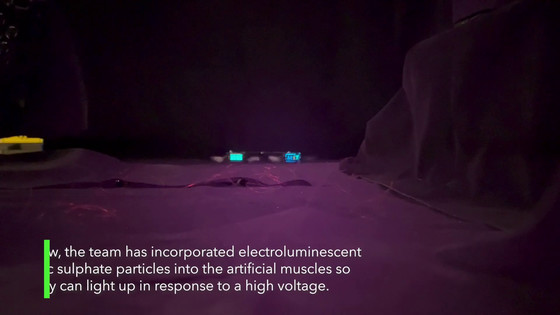
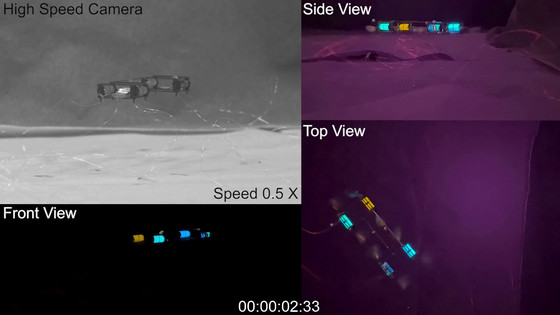
According to a research team led by Assistant Professor Chen, it was necessary to design the actuator itself so that it would not block the light emitted from the zinc sulfate particles of electroluminescence. Therefore, he has developed a highly transparent carbon nanotube electrode that allows light to pass through with a thickness of only a few nanometers. Also, electroluminescence zinc sulphate particles do not emit light without a very strong high frequency electric field. Therefore, we succeeded in making the particles shine brightly by creating strong electrolysis in the actuator using high voltage.
Furthermore, it seems that there was a problem that the quality of the actuator deteriorated by adding zinc electroluminescence sulfate particles, but by mixing it only with the top elastomer layer and increasing the thickness by several micrometers, the weight of the actuator is reduced. It seems that the microrobot can emit light without deteriorating the flight performance just by increasing it by 2.5%.
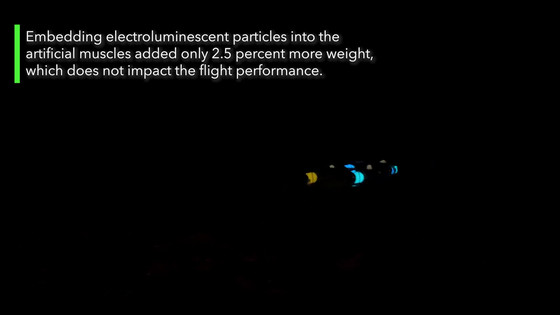
According to the research team, the light emitting system can accurately recognize the position of the robot with a camera. In the experiment, it seems that it was possible to track the position and attitude of the microrobot with an accuracy of 2 mm based on the light using the camera of the iPhone. It is also being considered to communicate using the light emission pattern.
'The luminous actuator acts as an active marker and may provide real-time feedback for stable flight on behalf of the motion capture system,' said Pakpong Chirarattananon, associate professor of biomedical engineering at City University of Hong Kong. It will be possible to track robots from a distance without the use of advanced equipment. This is an amazing breakthrough. I'm looking forward to what Associate Professor Chen's research team will achieve next. '
Related Posts:






